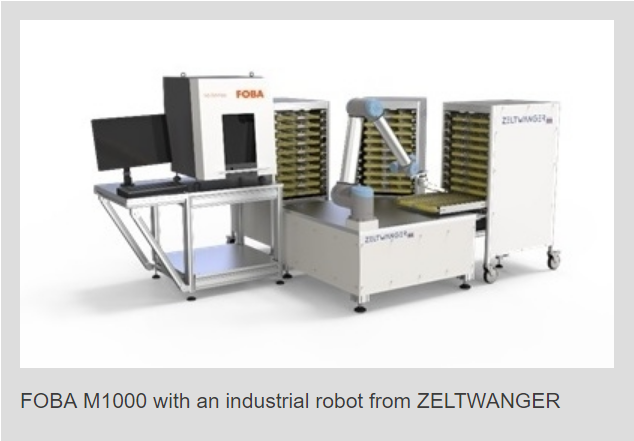Welcome to Sino Bearings web
24x7 HOTLINE:+86-28-81454188

 NEWS
NEWS
The automation of part handling or mark alignment in a laser marking process can help improve marking requirements and save production cost. In the context of demanding traceability marking requirements like the UDI (Unique Device Identification) of medical devices, direct part marking is on the rise. Therefore, laser marking system provider FOBA offer technical solutions, some in cooperation with automation experts, that make laser marking even more efficient.
In a webinar on October 21 at 9 am (CDT), FOBA will demonstrate the practical use of technology features and examples of automation of laser marking. Laser marking expert Dr. Faycal Benayad-Cherif will explain the challenges, limitations and solutions of combining laser marking and automation, from collaborative robot to fully automated solutions. Commercial solutions include automated loading and unloading, part feeders, and conveyor systems that help manufacturers obtain error-free and repeatable laser marking results around the clock.
Automation processes related to laser marking include, besides the loading and unloading of a marking station from the outside, also pick and place operations within a closed marking unit, as well as stacking or sorting, but also a subsequent packaging and cleaning. Depending on the degree of human interaction, a distinction is made between semi-automated and fully automated systems.
In addition to the automation of parts handling, the automation of the marking process itself also plays an important role. This primarily involves the exact positioning of the laser mark at the intended position on the product with the help of an integrated camera and corresponding software. The intention is not only to minimize human interaction, but also to make the process repeatable with consistent accuracy.
"As a pioneer in the field of camera-based laser marking, FOBA has already enabled a certain degree of automation of the marking process for many years," says Markus Vetter, FOBA product manager. This primarily concerns mark alignment by automated optical inspection, enabling the exact placement of the mark in relation to the component, as well as software-controlled quality checks from the beginning to the end of the marking process.